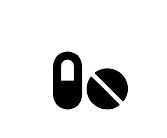In-Person Training
Drug Educators Alliance trainers use an EVIDENCE based and scientifically proven program to educate kids on the dangers of drugs.
The program we use is Reviewed & Evidence-Based by the Substance Abuse Mental Health Service Administration (SAMSHA).
- Evidence Based Program
- Over Four Decades of Experience
- Live presentation has been delivered to over 3,000 schools and youth groups
- Over 9 Million school children aged 6 – 18 have been educated in this program
SAMHSA Evidence-Based Prevention Program
Independent Study Demonstrates Effectiveness

Cigarette smoking

Smokeless tobacco

Cigarette smoking

Binge Drinking

Marijuana use

Amphetamine use
Decades of Experience and Development
To develop effective drug education, Narconon staff first had to address where past drug education efforts had failed. “Scare tactics,” fear, or reasoning by providing information alone never worked.
For over three decades, working with thousands of schools and several prevention models—everything from supplemental materials to customized live presentations and now complete, easy-to-implement curricula—Narconon staff refined an approach that speaks powerfully to youth and gives a realistic picture of drug misuse in their own language.
To accomplish this, they first asked youths to tell them what would work: They surveyed over 165,000 students to learn, from youths themselves, precisely how to influence youth regarding:
- decisions to stop using drugs (for those who had already used them)
- perceptions about drugs such as would change their mind from possibly trying or using drugs to a firm decision not to use them
- what might support and strengthen their decision not to use drugs (when they state they are already against them).
Social Influences a Key in Substance Abuse Prevention
What works is an approach that acknowledges and influences how youths make social decisions. Since the release of the first video The Truth About Drugs in 1995, Friends of Narconon has used the power of social influence to develop materials and curricula that prevent drug use among our youths before it starts.
As their understanding of what works has evolved, the program has also evolved from stand-alone videos to a full-fledged 8-session curriculum that incorporates true drug data and vital life skills tools into known-effective prevention factors.
The Narconon Truth About Drugs Program aligns with the US Center for Substance Abuse Prevention (CSAP) core factors for drug prevention programs:
- Information and education about the drug problem–the TAD program covers the effects of drugs on the body, emotions and the mind, as well as how to recognize the more subtle ways drugs are glamorized in the media
- Interactive activities such as discussions, group sessions, parenting and family involvement, and peer leader programs outperform other methods–the TAD program includes small group drills and take-home practicals to be done with other students, parents and family members.
- Supplying appealing alternatives to drug use–the TAD program helps youth set realistic goals and take actual steps towards achieving them.
- Involving community volunteers and coalitions. Mentoring programs have been shown to reduce drug use and increase positive attitudes toward academics. In most communities, the school is an extension of the neighborhood, part of the prevention efforts and a teacher can be a valuable mentor to their students.
- Changing community attitudes and norms on drug use. Interventions that affect knowledge, attitudes, and norms based on the person’s interaction with the environment are effective. In particular, the Narconon Truth About Drugs Video program presents key drug data in a format that also develops social and life skills; methods known to increase prevention program effectiveness.
Lennox & Cecchini (2008)
Study Design Narrative
This study assigned 14 schools in Hawaii and Oklahoma to either the Truth About Drugs intervention group, or to a wait-list comparison group. Participants in the comparison group were assessed at baseline and then at 6 months following baseline. After the 6-month, follow-up assessment, children in the comparison group schools were offered the Truth About Drugs program.
Sample Description
Implementation/Training and Technical Assistance Information

High School Prevention Trial
The NARCONON™ drug education curriculum for high school students: a non-randomized, controlled prevention trial. — Lennox R and Cecchini M. (2008) J. Sub Res Treat., 3:8
Abstract
Background
Methods
Results
Conclusions
Summary of Findings
- Cigarette frequency
- Cigarette amount
- Smokeless tobacco
- Alcohol Consumption
- Being Drunk
- Marijuana frequency
- Marijuana amount
- Marijuana frequency





